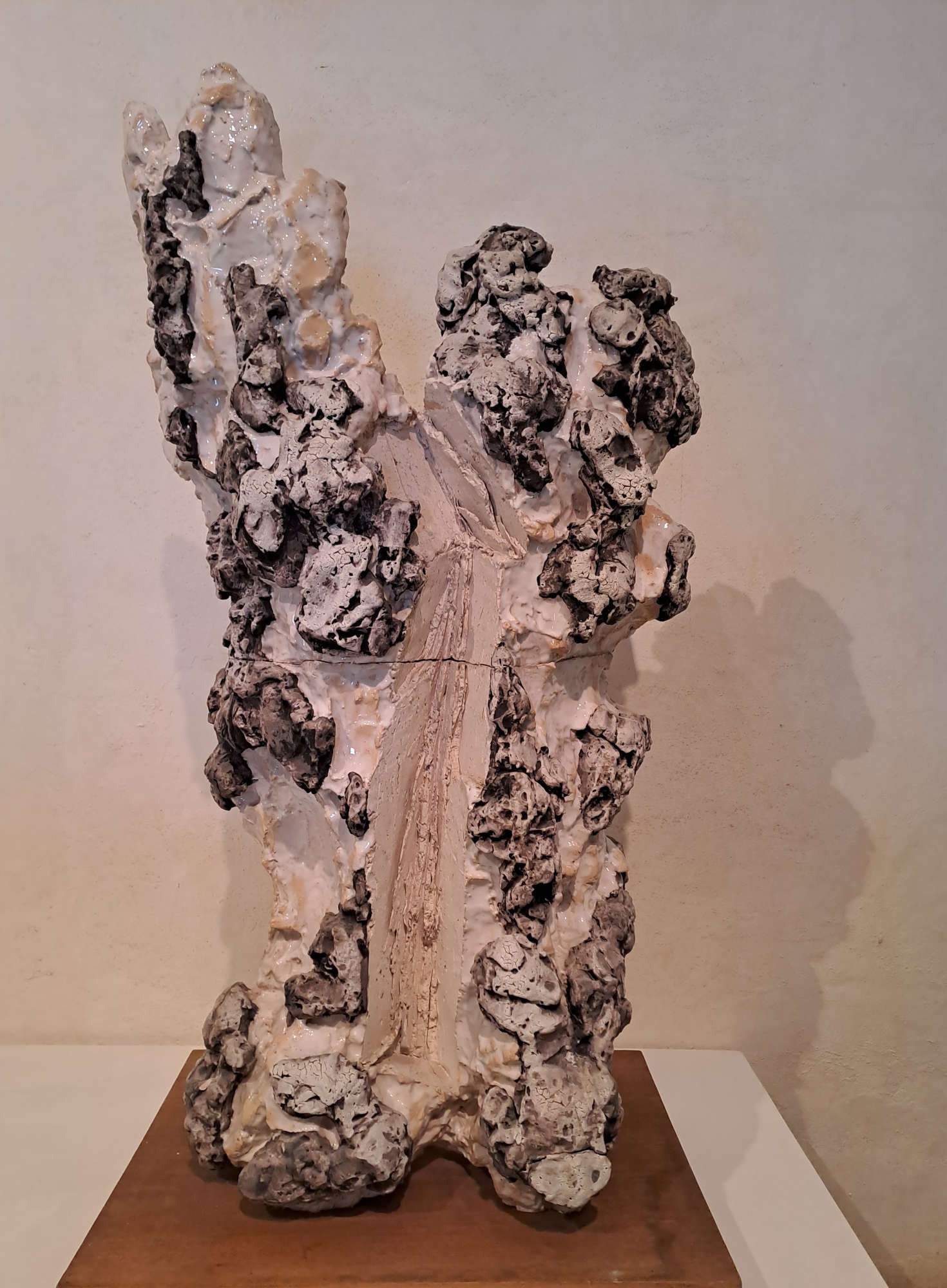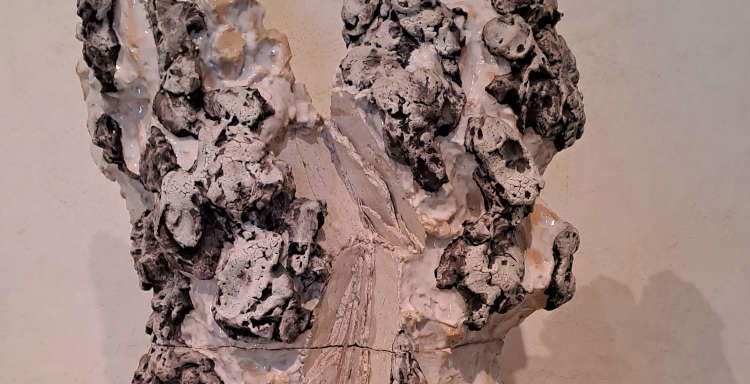Leoncillo, return to Gubbio: an exhibition dedicated to the great sculptor
One of the greatest sculptors of the 20th century, Leoncillo Leonardi (Spoleto, 1915 - Rome, 1968), is the protagonist of an exhibition Gubbio is hosting from Oct. 21, 2023 to Jan. 7, 2024 at the Logge dei Tiratori (entrance via della Repubblica, clock side). The exhibition Leoncillo. Return to Gubbio, curated by Enrico Mascelloni, with coordination by Francesco Balsamo and Elisa Polidori and collaboration by Maurizio Stazi, will also involve three other venues in the Umbrian city in its tour itinerary: the Ducal Palace, the Diocesan Museum and the Park Hotel ai Cappuccini. Palazzo Ducale will host two large sculptures by Leoncillo, among the most spectacular and important outcomes of his final phase, acquired in the 1960s through the Gubbio Sculpture Prize. The Museo Diocesano will host a work from a private collection, and the Park Hotel ai Cappuccini will present a number of works, mainly from his Roman novitiate and neo-Cubist season, focused on the renewal of so-called “applied art,” to the point of anticipating the later results of “antidesign.” Some of his best-known works will be presented in the Logge dei Tiratori, accompanied by preparatory sketches both in ceramics and on paper. The exhibition is promoted by the Cultural Association La Medusa with the patronage of the Polo Museale dell’Umbria, the Municipality of Gubbio, the support of the Perugia Foundation and the contribution of the Umbria Region, in collaboration with the Diocese of Gubbio, Palazzo Ducale di Gubbio, the Host Association and the Park Hotel ai Cappuccini. Main sponsor is Colacem.

Leoncillo’s artistic career traverses the crucial phases of the art of his time: his debut in the sphere of the Roman schools, where he takes to its extreme consequences, up to the threshold ofInformal, the expressionistlesson of Scipione; the neo-Cubism of the post-World War II period, in which the violent material periphrasis subsides, without, however, becoming extinct, into a more orderly spatial organization; the last and celebrated decade of activity, in which the reconquest of a lost form occurs through radical acts such as “cutting.”
The Gubbio exhibition will address Leoncillo’s work in the context of the Umbrian morphological and social “landscape” in which he was born and which will always remain decisive for a work that nevertheless opens up to the more torrid temperatures of the twentieth-century avant-garde. From the first drawings with Ulivi to the great Cuts and the San Sebastiano of the final season that “palimpsest of stones of the city in which I was born” is present like an obsession that will not be consumed. Of all the phases of his artistic activity, the exhibition will present more than 30 significant works, such as the Caryatid of 1945, Wounded Time of 1963, some large sculptures of his last production, such as the San Sebastiano Bianco of 1962, already acquired by the Gubbio Tourist Board through the Gubbio Sculpture Prize.
The exhibition will also present a large and rigorous selection of works on paper, selected to be related to the sculptures on display, thus grasping their nature not only as preparatory sketches but also as true variants.
The exhibition intends to capture the constant of a typological obsession that runs through all phases of his work, and which manifests itself in his predilection for forms of marked verticality or otherwise of radical horizontality, in the latter case so original as to suppose the stimulus for the equally grounded works of artists of the next generation such as Kounellis and Pascali. The exhibition Leoncillo. Return to Gubbio offers visitors the opportunity to discover and explore the path of Leoncillo, an artist now unanimously considered among the major protagonists of international sculpture of the past century, always linked to the dynamics (not only linguistic but also social and political) of his own years, but at the same time capable of escaping from any historiographical pigeonholing. A powerful and courageous art that of Leoncillo, insofar as entrusted to a then “precarious” (also in an aesthetic sense) material such as ceramics, nevertheless capable of liberating the autonomous creativity of the material, allowing it to unfold organic rhythms with a rich and full-bodied vitalism.
For information visit the exhibition website: www.leoncillogubbio.it
 |
| Leoncillo, return to Gubbio: an exhibition dedicated to the great sculptor |
Warning: the translation into English of the original Italian article was created using automatic tools. We undertake to review all articles, but we do not guarantee the total absence of inaccuracies in the translation due to the program. You can find the original by clicking on the ITA button. If you find any mistake,please contact us.




























